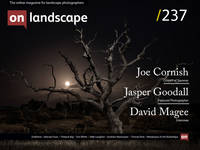Mads Peter Iversen

Thomas Peck
The real pleasure of photography is that it forces me to slow down and really look. That’s never easy in our rushed world, so a chance to stop, look and see is truly valuable.
There is a long tradition of the figure in the landscape. Indeed, the very first landscapes in art were often backdrops to religious foreground scenes: Madonna figures for example, or saints, with a landscape setting for the action in the pictures. The landscape as the subject itself became more prominent during the early 16th century, especially in Dutch painting (‘landscape’ comes from the Dutch landschap, meaning a ‘region or tract of land’).
Classical landscapes, inspired by antiquity and ideals of pastoral beauty, were popular in Italy & France during the 17 and 18th centuries - think of Poussin or Lorrain with their paintings of shepherds in arcadian paradises. The rise of Romanticism, particularly in Northern Europe, emphasised wild landscape. The placing of a figure in the land was used to bring allegorical meaning to an image, to suggest emotion and drama.
Photography, of course, has borrowed from this tradition. Locating a figure in the scene is a common trope of landscape photography. Often this is simply to suggest scale. However, it can do much more, it can bring allegorical meaning to an image, and Mads Peter Iverson’s photograph of a man gazing out over the sea towards the Drangarnir stacks in the Faroe Islands is exactly such an image. This is not just a photo of the landscape, this is an image about the human condition and a desire for transcendence. It is as much about the inner aspirations of man, as it is about the fantastic landscape of the Faroes…

